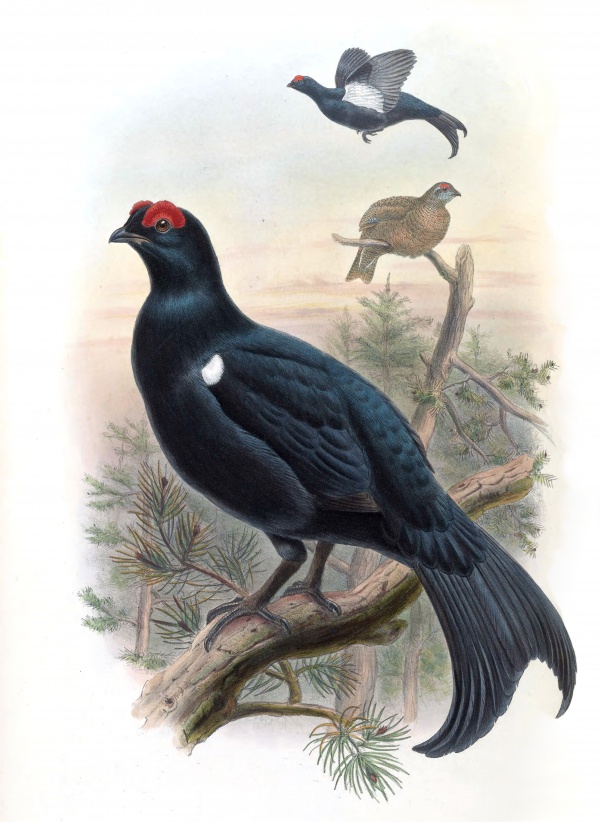Facts About Caucasian grouse
The Caucasian grouse is a captivating bird from the grouse family, closely related to the black grouse. It inhabits the southeasternmost regions of Europe and adjacent areas. Its scientific name honors the Polish naturalist Ludwik Mlokosiewicz.
Visually, the male Caucasian grouse is remarkable with its all-black plumage, vivid red eyebrows, and elongated, forked tail. In contrast, the female is grey with dark stripes and emits a distinctive cackling call.
These birds are non-migratory, residing primarily in the Caucasus and Pontic Mountains of northeastern Turkey. They thrive in open slopes near broadleaf forests. In May and June, they congregate for group displays, known as leks. The males' displays are relatively quiet, characterized by a faint whistling as they flutter their wings, revealing white feathers beneath. The female lays up to ten eggs in a ground nest and solely assumes the responsibility of rearing the chicks, a common trait among gamebirds.
Notably, the Caucasian grouse is one of the least-studied grouse species globally. It was previously listed as Data Deficient by the IUCN due to limited knowledge about it. However, recent studies indicate a decline in their population, leading to its reclassification as Near Threatened in 2008. As of 2010, the global population was estimated to range between 30,203 and 63,034 individuals. To aid in the conservation of these birds, efforts are underway to promote ecotourism, which can enhance awareness of the species and its habitat.

 Turkey
Turkey